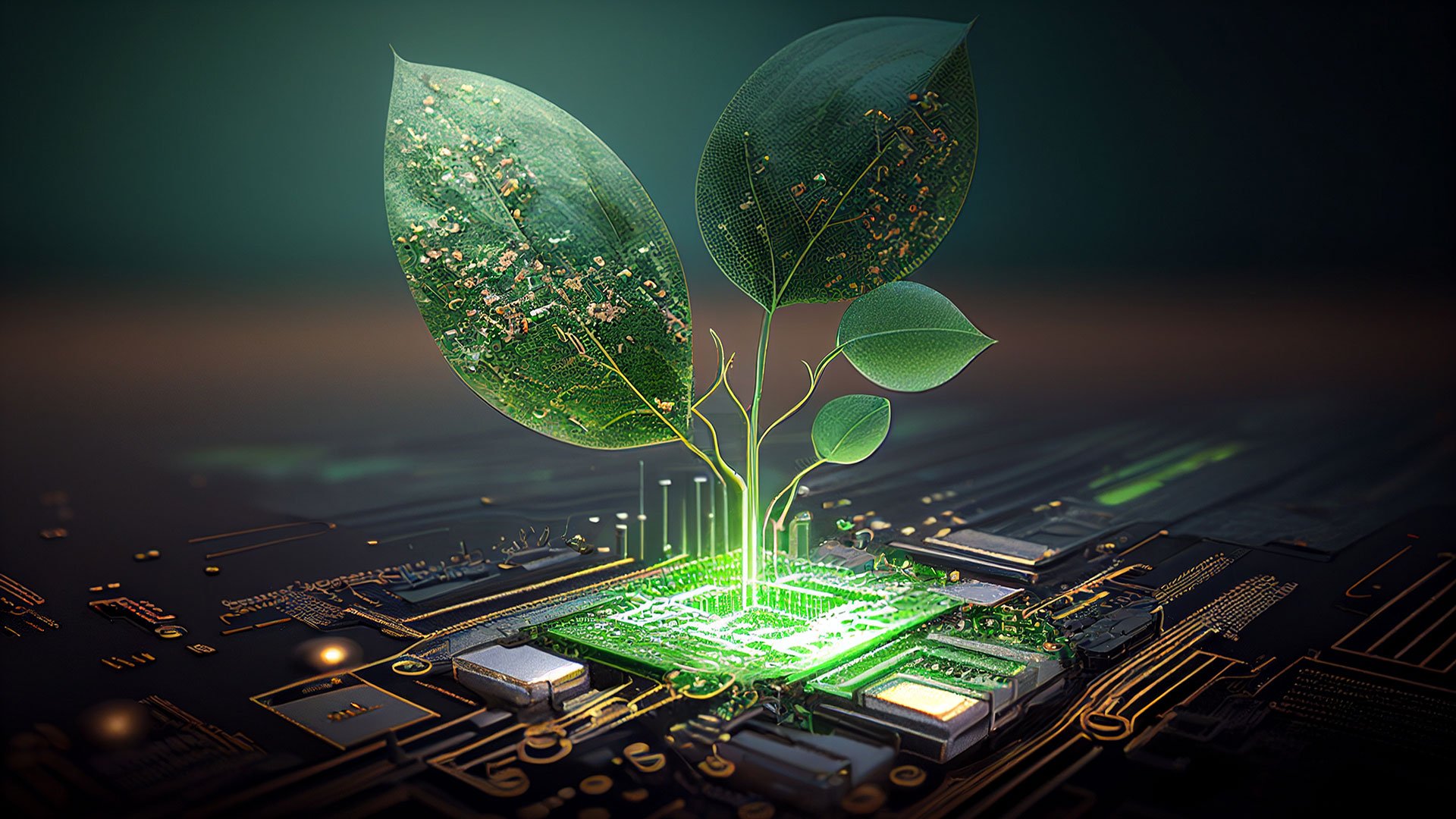We are 6 years away from 2030, the year marked by the United Nations (UN) as the “finish line” for achieving the 17 sustainable development goals (the 17 SGDs).
It is a reminder to us, businesses, to answer the call of the Global Compact to improve our own processes, technologies, and consumptions to positively contribute to a more equal, fairer, and healthier world.
The global warming and the rise of artificial intelligence (AI) are also pressuring us to act faster and wiser.
In this article, we will discuss what are sustainable technologies and how we can adopt more advanced technologies in a greener way.
A Digital Yet Green Future
The glittering skylines of Dubai and Riyadh are testaments to the Arab world’s economic powerhouse status. But with progress comes responsibility. As the region embraces digitalization, a crucial question arises: can we grow not just faster, but greener?
The answer lies in sustainable technologies, innovations that drive digital advancements while minimizing environmental impact.
The UN’s 17 Sustainable Development Goals (SDGs) and the Global Compact offer a guiding light for this journey. Let’s dive deeper into key goals for the Arab world:
SDG 3: Good Health and Well-being
Telemedicine platforms like Saudi Arabia’s DoctorNow bridge healthcare gaps in remote areas. A woman in Jordan could consult a doctor via the DoctorNow app, about her health concerns addressed without crossing vast distances. Another Yemeni woman could receive vital nutrition advice through the UNICEF SMART program.
These are just two examples of how telemedicine and digital tools are bridging healthcare gaps and saving lives.
SDG 4: Quality Education
The UAE’s Noon Academy democratizes access to knowledge, offering affordable online courses that reach students across borders and socio-economic barriers.
Imagine a young girl in a rural Moroccan village gaining access to world-class education from her smartphone. This is the transformative power of educational technology.
SDG 6: Clean Water and Sanitation
In arid regions like the Gulf, water is a precious resource. Smart irrigation systems like Netafim developed in Abu Dhabi optimize water usage in agriculture, conserving this vital resource for future generations. Picture lush farms flourishing in the desert, fed by precise water delivery systems made possible by sustainable technologies.
SDG 9: Industry Innovation and Infrastructure
The integration of smart technologies into infrastructure development using IoT improves the monitoring of energy consumption, the use of data, and the efficient application of new solutions.
Saudi Arabia’s NEOM project envisions a futuristic city powered by artificial intelligence (AI) and renewable energy, paving the way for sustainable urban living.
SDG 11: Sustainable cities and communities
This goal focuses on creating green spaces and reducing pollution. Dubai’s Smart City initiative incorporates smart irrigation systems and electric vehicles, promoting environmental sustainability within urban landscapes.
SDG 17: Partnerships for the goals
We are in this together! Adopting sustainable technologies shouldn’t be an individualistic effort but a collective effort by fostering responsible collaboration between governments, businesses, and NGOs.
The UN Global Compact provides a platform for these entities to collaborate on projects that advance the SDGs, further amplifying the impact of individual efforts.
Sustainable Technologies Defined
Sustainable technologies are not just the latest gadgets; they’re the bridge between human progress and environmental well-being. Unlike their resource-guzzling, data-hungry counterparts, sustainable technologies offer solutions like:
- Cloud computing: You can reduce your physical server footprint and its carbon footprint with cloud-based solutions. Picture data centers powered by renewable energy, humming away efficiently in the background of your digital operations.
- Virtualization: You can run multiple applications on a single server, maximizing resource efficiency and reducing hardware needs. Imagine leaner, greener IT infrastructure, saving energy and reducing e-waste.
- AI-powered energy management: You can now invest in buildings that learn and adapt, optimizing their own energy use through the power of artificial intelligence. Envision smart thermostats adjusting themselves, dimmers fading lights automatically, and all based on the building’s needs and the ever-changing environment.
But with great technological power comes great responsibility. We must embrace digital responsibility, ensuring technology serves, not harms. This means adopting corporate digital responsibility: minimizing e-waste, prioritizing data privacy, and promoting ethical AI.
Best Practices for Greener Tech
Now, let’s get practical! Here’s how businesses in the Arab world can go green with their technology:
-
Embrace the cloud
Migrating to the cloud reduces your physical infrastructure and its associated carbon footprint. Think of it as trading gas-guzzling servers for a sleek electric car for your digital needs.
-
Manage cloud power
Within the cloud, configure settings to automatically power down inactive devices and optimize server utilization.
-
Tackle dark data
Clean up unused data. Purge old files, optimize databases, and free up storage space. Remember, dark data consumes energy even when it’s just sitting there collecting digital dust.
-
Go green in practice
Implement power-saving settings on devices, switch to energy-sufficient software, and consider eco-friendly packaging. Every byte saved translates to a greener footprint.
-
Choose green partners
Choose providers committed to sustainability, prioritizing those with renewable energy policies and responsible data management practices.
-
Code for efficiency
Streamline your software to eliminate redundant scripts and processes, reducing processing power consumption.
-
Store smart
Opt for energy-efficient storage solutions, like solid-state drives (SSDs), and avoid data hoarding to minimize energy consumption.
-
Leverage server virtualization
Run multiple applications on a single server, reducing hardware requirements and overall energy demand.
-
Utilize AI and the IoT
Optimize energy use: Implement AI-powered systems that analyze and optimize energy consumption in buildings and facilities.
-
Go paperless
Adopt digital workflows and document management systems to minimize paper usage and printing-related emissions.
Conclusion
The Arab world stands on the cusp of a momentous transformation. By harnessing the power of digital technologies responsibly and prioritizing sustainability, the region can not only propel itself toward economic growth but also ensure a future that is prosperous, equitable, and environmentally responsible.
Let’s embrace this opportunity, share our experiences, and inspire each other to build a greener digital future for the Arab world and beyond.




